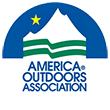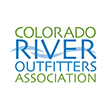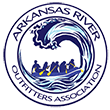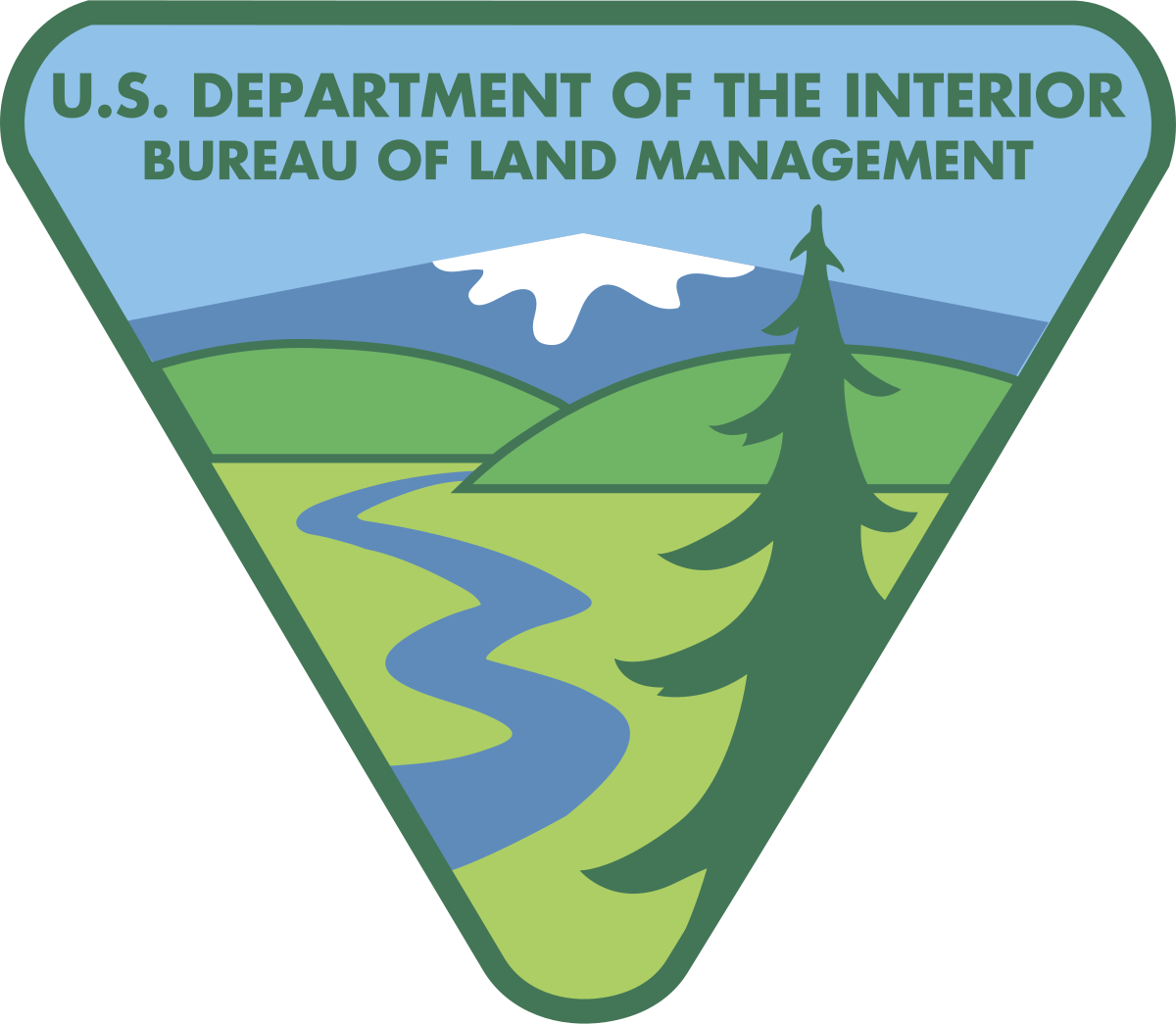Rio Marañon #5: Rapids and Eddies
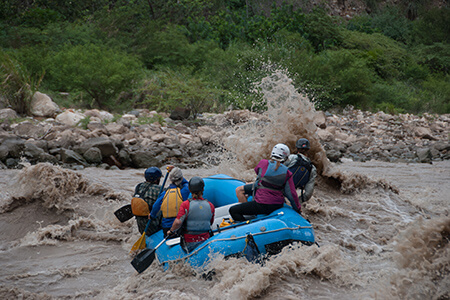
A truly free flowing river has a unique character. Those of us from the United States have seldom experienced a living river without dams, because almost every river in the United States has at least one dam on it. Intellectually, I knew there was a difference, but to experience it was a rare and wonderful treat. A free flowing river has a life of its own. It breathes, it speaks, it has moods. The Rio Marañon has a distinct personality, that I enjoyed getting to know. I felt as if our presence in the company of this river was at its pleasure; the minute it didn’t want us there any more, we would be expelled. But the river was in an indulging mood while we were there. It was powerful yet playful, dynamic yet forgiving. Like the Grand Canyon of the Colorado in Arizona, the river has miles of relative calm and continuous stunning scenery. Life moves at the river’s pace, which is deceiving, because although it may be calm and serene, a glance at the shore will show you that the boats are moving along at a good clip. We were there at the beginning of the rainy season, the equivalent of June in the northern hemisphere, and the river rose as our trip progressed. Each day we seemed to effortlessly cover more and more mileage. On December 30, for example, we floated ten kilometers in 28 minutes! An inevitable feature of all rivers at one time or another is upstream winds, and we had a few afternoons when the wind was rather fierce. But the current flowed so strongly that if we sank our oar blades into it, our rafts would be carried downstream despite the blowing gale. For me, after years of running rivers, that was a unique experience. But the Rio Marañon also has many rapids, and those rapids stand in stark and powerful contrast to its calmer sections. On other large volume rivers I have experienced, there is usually an area where most of the current concentrates to form a smooth tongue at the rapid’s entrance. While scouting a rapid, you locate that tongue and begin making your plan to negotiate the rapid based on where most of the current is going. Often, a defined wave train is present where the waves build and break downstream, one following the next. But the Rio Marañon was different. Not one of the rapids had a smooth tongue of current to orient us. Instead, we were greeted by a maelstrom of waves from bank to bank, building and breaking in every direction—from either shore and at every angle all at the same time. The goal of the scout became to find the gigantic recirculating holes, walls and other obstacles that must be avoided at all costs, and then chart a course downstream, taking the waves as they came. The running of the rapid was a chaos of crashing waves, hitting the boat from every side; the aim was to hit the biggest ones straight and brace for the others. And for me, it was all about riding the bow and high-siding every wave I could. We often stood our 16-foot raft up on end as we rode over the crest of one wave and accelerated down into the trough behind it, only to be broadsided by another wave at the bottom before riding up another wave in a different direction. What a ride!! The lack of coherent behavior of the waves was exhilarating, and I had the distinct feeling that the river was playing with us like a cat batting at a mouse. The power of the water was intense, and yet it let us go, spluttering and whooping and unscathed every time. Perhaps the river knew we were on its side, and wanted to show us its best face. I know I am being anthropomorphic, giving the river a personality and imbuing it with intention toward us, but there is something about a river that feels like a living entity, and as humans we seek to interact with and understand that life by drawing parallels between its existence and our own. Beyond the anthropomorphism, there are many characteristics of the river that defined its ‘personality’. Besides the unique character of its rapids, the river level rose and lowered several times during our two-week trip. After a few days on the river, it began to get siltier and we began to see tree trunks and other debris riding the current with us. Several times we saw sand banks along the shore give way into the current carrying entire trees with them. Several nights at camp the river rose or dropped several feet. The river became increasingly silty and gray-brown, but not sandy; there was no scratchy grit to it, just a smooth siltiness. Another feature that I can’t remember noticing elsewhere was that we could often hear rocks rolling along the bottom of the river. There was the hiss of the silt in the current, but also good sized rocks clacking into each other as they rolled along the riverbed—a fascinating sound. And then there were the eddies. As the river rose, the eddies boiled. By boiling, I’m referring to their action, not their temperature. The river was cool but not cold throughout the trip. But the eddies changed character as the river came up. As one might expect, the eddy currents swirled upstream along the shores stronger and stronger as the water level rose, and it was hard to escape their grasp once they took hold of a raft or kayak. But that was not the only way they changed. In addition to currents that ran upstream on the surface of the water, the eddies also developed vertical currents that pushed up from the river bottom, seeming to boil up in massive domes in one place, then sucking back down in whirlpools in others. Our boats danced and pirouetted along the seams of these contradictory currents
Rio Marañon #4: Buying a Paddle
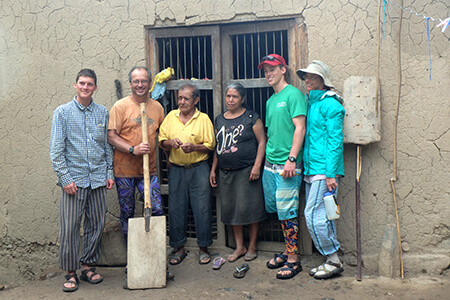
Joe and the boys and I have a tradition that started on our first overseas trip as a family. That trip was to Tanzania when Ben was 11 and Ethan was 8. We spent New Year’s at the coast, just a few days after the 2004 tsunami that devastated southern Asia. The wave arrived on Tanzania as an extra high tide—a relative nonevent—just a day or two before we got there. But Ethan found a wooden paddle on the beach that had washed up with the Tsunami debris, and we brought it home with us. So began our paddle collection. We have obtained a paddle on every overseas trip since. We usually purchase the paddle from a local family. It is a win-win situation because the family gets a lot more for their paddle than they paid for it, and we get a unique paddle for our collection. We have a paddle from The Mekong River in Vietnam, Lake Titicaca in Peru, the Ecuadorian jungle, and Lake Chama in Ethiopia, in addition to our Tanzanian paddle. We usually enlist the help of our local guide in the search for the paddle. At first the reaction is one of “are you serious?!”, but then the guide really gets into the spirit and searches for the right person to buy a paddle from and convinces them to sell their paddle. There is always a good story involved. The search for a paddle on the Rio Marañon followed a similar trajectory as usual. Pedro wasn’t sure what to think at first, but once he realized we were serious, he began to see the opportunity selling a paddle would be for a poor local family. The day after Christmas, at the farm next to our campsite, was our chance. Most of our group walked up to the farm house after breakfast to meet the family. The farmer and his wife were hosting grandchildren from the city ranging in age from about three to perhaps nine or ten. They welcomed the lot of us into their small dirt-floored home, where we sat around the perimeter of the living room area while Pedro showed them videos of rafting and kayaking on the Rio Marañon, plus a video about the consequences of the dam proposals to their future. We appreciated seeing what information SierraRios was using to help the locals along the river understand what would happen to them if the dams became a reality. It was also fun to watch the children sneaking peeks at us; we were the most excitement they had seen in a while. We asked some polite questions through our various Spanish speakers, and listened to translations of how these settlers in the wilderness felt about the dams. They seemed a bit bewildered by the information they were receiving, or perhaps by the presence of so many foreign house guests. I remember the grandmother said that the idea of losing their home because of a dam was frightening. I wasn’t sure if the family really believed such a thing could happen, though. Pedro had explained to the grandfather about our quest for a paddle, and after the videos, several paddles were assembled outside the front door for us to choose from. They were the right size for us to take home on the plane (not always the case) and were clearly handmade. The man had found them washed up on his beach after flood rather than making them himself, but they were authentic: a hand-hewn shaft about four feet long with a heavy rectangular blade attached with metal brackets. It was a heavy paddle and we were impressed that the Peruvians actually used such a heavy paddle to cross the river. The man wanted to give us the paddle as a gift, but we insisted we should pay for it. We paid him 50 soles, which is roughly $15. At first he wouldn’t take it, saying it was too much, but finally he took it saying he would do it for us, not for himself. His wife then tried to give us another paddle since we had paid so much, and at our polite refusal, brought us a large bunch of bananas for our trip, which we gratefully accepted. Then the farmer showed us his water-powered mill, under the house, which he had built himself and was very proud of. It was fascinating—simple and effective—with a wooden wheel under the house that the ditch water turned to spin a shaft that came up through the floor of the grinding room to push the attached huge hand hewn stone grinding wheel around a circular trough. After that, the two oldest sons led us on a short hike through their farm. When we departed the beach just before noon, the six kids came down to the beach to see us off. We had made new friends. These lovely people were quiet and unassuming, yet generous and accepting. We had been told that in some places along the river, we might not be welcome because the locals associated rafters with the exploration crews from the dam building companies. Especially farther down river in the jungle section, rafting groups had been threatened with death if they passed through. But here at this farm, and at the other villages we visited, we were welcomed because the people knew we were sympathetic to the cause of saving their river and their homes. To raft and/or help protect the Rio Marañon, contact SierraRios at www.sierrarios.org Read more entries in our ten-part series about the Rio Marañon.
Rio Marañon Post #3: Christmas Day
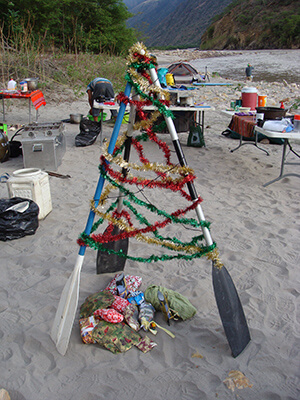
Our trip on the Rio Marañon was over Christmas break so that our college student kids could join us. December is the equivalent of June in Peru, so the summer rains were due to begin and the river was due to rise. We began our trip on December 22, and the days leading up to Christmas were wonderful. The canyon was deep and stark, with many-armed cactuses the size of trees dotting the hillsides, and tortured geologic folds in the mountain terrain laid out for our inspection. Beyond the innermost canyon, we could see views of towering mountains dressed in clouds and deep greens and blues. The map showed several places where the canyon was 3000 meters (10,000 feet) deep. The canyon walls were steep, and the current swift, a function of the still-growing Andes through which it cut. Flocks of small green parrots jabbered overhead and argued from the trees. Much of the time it was cloudy, but when the equatorial sun broke through it was instantly almost too hot. Ours were the only rafts on the river, and each night we camped on a huge deserted sandy beach. Christmas eve we camped at a long beach just above a major rapid called Llanten. We shared a succulent meal of steak and salmon presented with special flair by Joe, Will, and Chris. We set up a Christmas tree using a tripod of paddles from the paddle boat, and wrapped multi-colored garland I had brought around it. Steve had some battery-powered Christmas lights that he donated to the effort. Jane brought out small gift bags for everyone that contained chocolate and other fun trinkets. We brought Santa or Elf hats for everyone, and we all wore them to dinner. The mood was festive and fun. After dinner we went around the circle and everyone told about the Christmas traditions they grew up with. We felt close and warm on this special night—day three on the Rio Marañon. Christmas day was later voted one of the biggest highlights of the trip by many. We rose early, as we always did, just before dawn. We felt, as a group, that it was good to make the most of the cool morning, and to rig and get on the river before it got too hot. The majority of our group were river guides, so it was a natural routine. The only ones not thrilled with this plan were our Peruvian guides, Pedro and Freddy, but they went along with it without open complaint. After breakfast, we had a white elephant gift exchange. Each in the group had purchased a small gift in Peru costing no more than five US dollars and wrapped it. We put our gifts under the tree (plus two gifts brought from the US for Pedro and Freddy). Then we went around the circle. The first person took a gift from beneath the tree and opened it. The second person could choose another gift from under the tree or could steal the first person’s gift. If the second person stole the first person’s gift, the first person had to get another one from under the tree. We went around the circle this way, either choosing a gift from under the tree or stealing someone else’s until everyone had a gift. Each gift could only be stolen twice. We had a blast. People had been encouraged to purchase silly, entertaining or unique gifts. There was lots of stealing and laughter, and when it was all done, everyone had a souvenir from Peru. Pedro and Freddy had a good river knife and a rafting logo ball cap. All were happy. Next on the agenda was the best hike of the trip, up the wash that formed Llanten rapid. The wash became a narrow canyon, almost a slot, with sheer walls that left a strip of blue sky visible far above. A waterfall marked the end of the trek, where several showered and played in the water. Additional highlights included a large fresh water crab and a flock of green parrots with pink crests on their heads. After the hike we scouted Llanten rapid. It was the biggest rapid we had seen so far. And that was saying something. The river had been rising, and the waves were huge—some taller than the length of our 18 foot rafts. I was fascinated by the character of the river. My experience with large volume rivers was that there was usually a smooth tongue somewhere in the rapid where most of the current flowed. But not on the Rio Marañon. There was no tongue at all. No defined wave train either. Waves were everywhere from bank to bank, building and breaking in different directions, not just downstream. So the object was to miss the huge flipping holes, and try to hit the waves as straight as you could. For me the most nerve-wracking time is preparing to run a rapid. Once we have pushed off from the shore and are committed to running it, the pressure eases for me. I rode the bow in Joe’s green boat. I love to ride the bow. I stand at the very front of the boat and hold onto the grab lines, then I lean into every wave, letting them break over my head, pushing the front of the boat down. The waves came left right and center, and we came through in fine form, as did all the other boats. We were all soaked and laughing in the tail waves. What a thrill! But Llanten wasn’t the only rapid on that magical Christmas day. Samosierra was a series of rapids that stretched over six kilometers! The first in the series was the biggest, and the current pushed into a wall at the bottom. Joe and I managed to catch the eddy on the right side and avoid the wall, as did Ethan in the orange boat, and the paddle boat. But Dude, rowing the blue raft, did not
Rio Marañon #2: Near Disaster at the Start
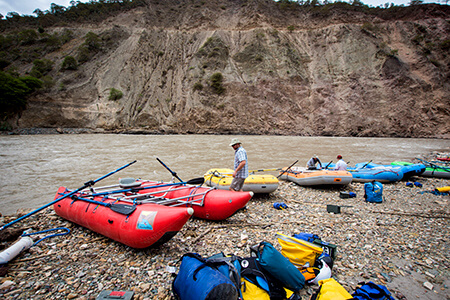
Rigging with unfamiliar equipment takes a while. But 12 out of 13 of our group are experienced rafters, so we’ve got this. The folks who rode to the put-in with the gear truck already had the boats blown up and the gear unloaded when the rest of us arrived from the airport. So we all jumped in and finished the work in a matter of a few hours. It was warm on the open rocky beach, but cloudy, so the temperature was very tolerable. We decided to assign boats to people for the trip so that everyone would be responsible for rigging a particular boat each day. Joe and I took the green boat, because our Colorado rafting company has green boats. Our sons, Ben and Ethan took the orange boat, Glenn, Jane and Larry took the yellow boat, Steve and his girlfriend Rachel took the red cataraft, Hal and Dude took the blue boat, and Glenn volunteered to rig the blue paddle boat. Will and Chris, who would kayak, jumped in and helped where needed. Steve and Chris already had dysentery from something they ate or drank in Trujillo, and both were clearly feeling very poorly. Joe and I felt glad that Glenn was at least somewhat familiar with catarafts and could help Steve rig. We didn’t request a cataraft for the trip and were a bit surprised that we were given one by the outfitter, SierraRios. Anyway, rigging went fairly smoothly, and shortly after lunch we were loaded and ready to launch. This was a special group of old and new friends from all corners of the U.S., plus our two Peruvian kayaker guides, Pedro and Freddy, who we already could tell were going to be excellent. Pedro had somewhere around 15 Rio Marañon trips under his belt and knew the river, its issues and its people well. He also spoke English well and was a very likeable person. Freddy was an expert kayaker, but only 18 years old, with no English at all. But our group had four fluent Spanish speakers, Ben, Will, Larry, and Rachel. Ben, Will and Ethan, our youngest group members at 22, 20, and 19, bonded quickly with Freddy, and he worked his way into the rest of our hearts in short order. It was a momentous thing to launch our outfitted private trip on the Rio Marañon. This wasn’t just any trip—this was the primary source of the Amazon River! In Peru! In the wilderness! We all had silly grins plastered on our faces, and felt giddy with the excitement of it. We were about to become a floating community, together for better or for worse for two entire weeks. As we pushed the boats off from the shore, we merged with the river in a physical and an emotional way. So began the trip of a lifetime!! I had chosen to start off in the paddle boat. It felt good to pull my paddle through the silty gray-brown water in concert with the others. We launched last, after the cataraft, knowing we would float faster than the oar boats and catch up quickly. The breeze in our faces, the strong current carrying us…perfect… Suddenly a rafter’s whistle cut shrilly through the air. A whistle? We’d only been on the river for less than a minute—what, somebody fell out? Tree across the river? We looked around frantically for the source of the whistle. It was the cataraft. Steve was blowing his whistle insistently. He was sinking! The cataraft was sinking! Steve is tall and very strong. At another time it might have been comical to see him waist deep in the river with his Tully-hatted head bobbing well below the handles of the oars. But in this case, it was a true emergency. His boat was falling apart and there was absolutely nothing he could do about it. He was carrying all the safety, first aid and repair gear, as well as two huge coolers full of food and several river bags full of personal gear. The group sprang into action. Our paddle crew paddled hard toward him, but he was floating downstream fast, his boat sunk deep in the current. We could see him struggling bravely to try to control the floundering craft, but with little success. To compound his troubles, a rapid was coming up fast. The rapid was along the right side of the river on a left-hand bend. The current pushed into the shore. Steve was helpless. Slowly we were gaining on him in the paddle boat, but not fast enough. Joe, in the green raft, was downstream of Steve’s cataraft. He slowed down and positioned himself between Steve and the shore as the current accelerated into the rapid. Joe pulled away from the shore directly in front of the cataraft, so that the sinking red craft ran into Joe’s stern, and he was able to hold the cataraft off the shore. After the rapid, which was relatively small by big volume river standards, Pedro climbed aboard Joe’s raft, pulled his kayak on board after him and caught a rope thrown by Rachel from Steve’s boat. With Joe rowing frantically, they attempted to pull the cataraft into the eddy on the left side of the river. Our paddle boat caught up to the scene just at the end of the rapid and paddled hard into the cataraft, pushing it toward the eddy as Pedro and Joe pulled. The other boats had eddied out and members of the group ran upstream to help catch Joe’s boat and the cataraft. In probably five minutes, it was over, and the boats were safely ashore, but it was a close call. Our adrenaline was pumping, and we all immediately jumped in to figure out what had happened and to fix the cataraft. What had happened was a silly mistake, which is all it takes to cause disaster on a river trip. While rigging the boats at the put-in, group members had
Rio Marañon #1: The Plane Ride to the Put-in at Chagual
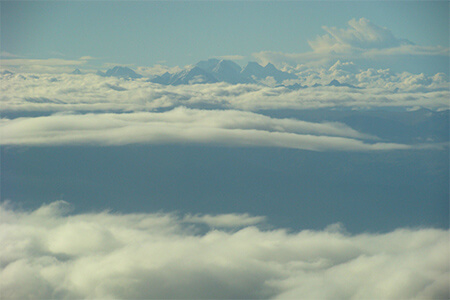
It was still dark when the alarm began to buzz. But I was already awake. My excitement for the day ahead had make it hard to sleep. I jumped out of bed and was dressed in minutes. Joe knocked on the boys’ door, next to ours in the Hostel Colonial in Trujillo, Peru, and they were already up, too: our two boys, Ben and Ethan, joining us for their winter break from college, and their college friend, Will. It wasn’t long until we were climbing into our pre-arranged taxi outside the hostel, and driving through the dark to the Trujillo airport. When we arrived, we were the first ones there—even before the airport workers! Ah, well. Better than being late.We set up camp on the few chairs along the hallway, next to the ticket counter for domestic flights, which consisted of two airlines. Larry, a trauma surgeon and river rafter in his sixties arrived a few minutes later. He had been struggling to get to Peru for nearly a week, fighting cancelled flights and lost luggage due to a LAN airlines strike. Another member of our group, Glenn, had also lost his luggage because of the LAN strike. Glenn, Jane, Chris, and Hal had gone to the river put-in by truck yesterday with our Peruvian guides, Pedro and Freddy, to begin the rigging for the trip. Glenn had pieced together enough borrowed gear to get by for our 14-day trip, but it had been a big distraction and stressor for him. Larry, fortunately, had received Glenn’s luggage at his hostel at 1:00am the night before, so we celebrated how happy Glenn was going to be when we arrived at the put in with his gear. Less fortunate was Larry himself, whose luggage was now lost, as well. Soon the other three members of our group, Steve, Rachel and The Dude, arrived at the airport, and after hugs and greetings, we got in line at the ticket counter. SierraRios had arranged our flight to Chagual, near the put in for the Grand Canyon section of the Rio Marañon. The original plan was for our group of nine to fly in together on the first flight of the morning. But by the time we realized we needed to get in line at the ticket counter, there were already five local people in line ahead of us. As a result, we had to split our group into two flights. We four Greiners took the first flight with half of Glenn’s luggage, and the other five would take the second flight one hour later with the rest of Glenn’s gear.The plane took off smoothly into the morning coastal clouds, which we broke through in short order, and then we banked toward the Andes, which towered to the east. The little plane was as full as it could be and labored higher and higher as the mountains loomed close. We cleared the first range with at least a thousand feet to spare, and climbed for about another 10-15 minutes as we soared over range after range, many mostly obscured by clouds. Jagged peaks poked out of cottony cloud banks in the distance. Shades of blue and gray and white and shadow surrounded us, with occasional green and brown when the sun managed to reach through the clouds to the ground. And then the descent began. The clouds loomed closer and closer and then we were inside them. All those mountains all around but we couldn’t see a thing! I fervently hoped the pilot had a very good sense of where he was. A few tense moments later, we broke through the clouds and got our first view of the Rio Marañon, stretching out below. We were already in the canyon, still high, but dropping steadily. The little plane floated smoothly, not a bobble. But my heart pounded. In the next few minutes our little plane would execute what was reported to be one of the most dangerous approaches and landings in the world. Gulp. And yet, my heart soared, too. It was beautiful. Stark, desert beauty, for there is no jungle this far up the river drainage. Steep brown and blue-green slopes and crags surrounded a wide brown river dotted by large sand bars. We dropped still more. Then the plane banked into a smooth, wide turn, straight toward a sloping mountain. We soared close over the top of it, still banking until 360 degrees had been achieved, then leveling out. We could feel the engine slowing still more…and then the decisive drop toward the runway, which had just magically appeared in front of us—right in front of us. Mountains to either side, cross the river, and there began the impossibly short runway. And yet, the pilot brought the plane down smoothly, with barely a bump, and slowed to a serene stop before the embankment that signaled the runway’s end. Wow! What a thrill, and yet, what a gorgeous trip. And here we were, at the river. We had been warned about the no-see-um gnats in this river canyon: that we wouldn’t feel them biting, but we would get red welts. Being particularly susceptible to swelling and itching from such bites, I made sure I was covered from head to foot with permethrin (insect repellent)-coated clothing, including socks, gloves and bandana. The others sprayed themselves with DEET within minutes of our exit from the plane. We hung out by the tarmac for a few minutes. The temperature was pleasant and a thin layer of cloud helped keep the equatorial sun from feeling too hot. A few minutes later a black pickup truck pulled up and the driver said he was our ride to the put-in. Never mind that we had never seen the man before and that we were in the middle of nowhere. We clambered aboard and he drove us up a dirt road for a couple of miles, where the river and a colorful array of boats and river gear lay splayed
Hidden Jewel: Rafting Peru’s Rio Marañon, the Primary Source of the Amazon
[vc_row][vc_column][vc_column_text css=”.vc_custom_1516920280751{margin-bottom: 0px !important;}”]This 10-part series documents a two week trip down the Rio Marañon that Wilderness Aware’s owners, Joe and Sue Greiner, their two sons, and nine friends took from December 22, 2015 through January 4, 2016. The Rio Marañon is the primary source by volume of the mighty Amazon River. It starts high in the Peruvian Andes and flows down through a desert canyon that has been dubbed by river enthusiasts “The Grand Canyon of the Marañon”. It is the longest free-flowing river in the world. However, 20 proposed dam projects may destroy this amazing river, its ecosystems, and would displace the Peruvian villagers who have long called its shores home. Written by Sue Greiner, this blog series documents our trip, and shines a light on this spectacular river in the hopes of raising awareness about the Rio Marañon so that it can be saved for Peru and the world. Join our adventure of a lifetime by following our blog series, which will post every week from March through mid-May, 2016. To raft and/or help protect the Rio Marañon, contact SierraRios at sierrarios.org.[/vc_column_text][/vc_column][/vc_row][vc_row][vc_column width=”1/3″][vc_column_text css=”.vc_custom_1516920862337{margin-bottom: 0px !important;}”] Rio Marañon #1: The Plane Ride to the Put-in at Chagual It was still dark when the alarm began to buzz. But I was already awake. My excite… [/vc_column_text][/vc_column][vc_column width=”1/3″][vc_column_text css=”.vc_custom_1516921764590{margin-bottom: 0px !important;}”] Rio Marañon #2: Near Disaster at the Start Rigging with unfamiliar equipment takes a while. But 12 out of 13 of our group… [/vc_column_text][/vc_column][vc_column width=”1/3″][vc_column_text css=”.vc_custom_1516922254962{margin-bottom: 0px !important;}”] Rio Marañon #3: Christmas Day Our trip on the Rio Marañon was over Christmas break so that our college student kids… [/vc_column_text][/vc_column][/vc_row][vc_row][vc_column width=”1/3″][vc_column_text css=”.vc_custom_1516920923605{margin-bottom: 0px !important;}”] Rio Marañon #4: Buying a Paddle Joe and the boys and I have a tradition that started on our first overseas trip as a family… [/vc_column_text][/vc_column][vc_column width=”1/3″][vc_column_text css=”.vc_custom_1516920938470{margin-bottom: 0px !important;}”] Rio Marañon #5: Rapids and Eddies A truly free flowing river has a unique character. Those of us from the United States… [/vc_column_text][/vc_column][vc_column width=”1/3″][vc_column_text css=”.vc_custom_1516920956968{margin-bottom: 0px !important;}”] Rio Marañon #6: Tupén Grande We had spent the first half of the day blasting through huge standing waves in rapid after rapid… [/vc_column_text][/vc_column][/vc_row][vc_row][vc_column width=”1/3″][vc_column_text css=”.vc_custom_1516920975209{margin-bottom: 0px !important;}”] Rio Marañon #7: The Pachamanca We hiked from our camp on the beach back to the village at Tupén Grande for the evening… [/vc_column_text][/vc_column][vc_column width=”1/3″][vc_column_text css=”.vc_custom_1516920988946{margin-bottom: 0px !important;}”] Rio Marañon #8: Pools and Waterfalls The river was coming up again. The morning we left Tupén Grande the water… [/vc_column_text][/vc_column][vc_column width=”1/3″][vc_column_text css=”.vc_custom_1516921007835{margin-bottom: 0px !important;}”] Rio Marañon #9: The Jungle and Tutumberos January 1, 2016 was our last day in the Grand Canyon of the Marañon. The original plan was… [/vc_column_text][/vc_column][/vc_row][vc_row][vc_column width=”1/3″][vc_column_text css=”.vc_custom_1516921047301{margin-bottom: 0px !important;}”] Rio Marañon #10: Dams and Regrets Mid-morning on New Year’s Day, we arrived at Amazon Cavern, which is reminiscent of… [/vc_column_text][/vc_column][vc_column width=”1/3″][/vc_column][vc_column width=”1/3″][/vc_column][/vc_row]
Staying Warm Outdoors – Infographic
You can buy all the fancy warm clothes you want, but if you aren’t wearing them in the right combination, it can be near impossible to staying warm outdoors on cold days and nights. There’s actually a specific way to layer your clothes for optimal warmth that is also still comfortable for outdoor activities. Find out whether or not you’re doing it right below and what pieces you should pick up on your next trip to the store. What are your favorite layering tips or articles of clothing to stay warm outdoors? Tell us in the comments below! At Wilderness Aware Rafting, we love whitewater rafting and spending time outdoors, even when it’s cold. Rated #1 on TripAdvisor, we offer whitewater rafting trips, horseback rides, zip line tours, and many raft trip packages. Contact us or request a brochure to plan your Colorado trip today.
Experience the Best of Colorado
Colorado, the mile high state, is home to 5.2 million people and there are many reasons why people choose to move here, stay here, or stop by for a while. Although some people have lived here all their lives, it can be difficult to experience the best that Colorado has to offer, simply because there’s so much to do. Nicknamed the, “Centennial State,” Colorado has the Southern Rocky Mountains, Colorado Plateau, the Great Plains, Colorado River, and plenty of wilderness for miles on end. Don’t be surprised if most of the people you meet here are obsessed with the outdoors. There’s more to do here than just skiing and snowboarding. If you want to get the most of your time in Colorado, try to knock these exciting activities off your list. Hiking If you’re standing 5,280 miles above sea level, it doesn’t quite count as hiking, especially when there are plenty of mountains nearby to climb. While there are 53 fourteeners you can hike, which can take a 3-12 hours to climb each one, there are many other winding options into the peaks. It’s definitely worth taking a couple hours out to wander through the quiet forest and take in the view at the top of a trail where you can see for miles around. Whitewater Rafting Colorado has many expert rafting guides and professional rafting teams because of the wide range of class levels available plus 18 different rivers to hit. The most popular is the Arkansas River, which has jaw-dropping views of scenic canyons with geological landscapes. This is the place for white water rafting trips. Backpacking & Camping There’s something about getting back to nature and making a campfire that is so Colorado. Whether you’re backpacking or car camping, getting away from the city and away from technology is refreshing for the heart and soul. There’s saying that goes, “There is no Wi-Fi in the forest, but I promise you will find a better connection.” Once you experience camping in Colorado or Arizona, you’ll know what it means. We can’t forget to mention how fun it is to roast marshmallows over the open flame too. Rock Climbing With so many mountains and canyons, Colorado is a great place to go rock climbing. If you’re not ready for outdoor climbing, there are plenty of indoor gyms. Outside, it’s best to go with a legitimate guide who can make sure you are safe and understands your ability. When it comes to climbing rocks, there’s no room for messing around. The thrill of climbing is indescribable but let’s say it’s like nature’s jungle gym. Eldorado Canyon, Black Canyon, and Ouray are popular places to go to get your climb on. Horseback Riding Horseback riding in Colorado is one of the most popular outdoor activities to do. It is a great way to experience the West like the cowboys and pioneers once did. Riding through nature on horseback is fun and gives way to wildlife sightseeing. Make sure you find a place that offers excellent horseback rides in Colorado. Fishing Fishing in Colorado brings in many visitors because of the 6,000 miles of rivers, 2,000 lakes, and 35 different types of cold and warm-water fish that live here. Like many states, an affordable fishing license is required. Catch yourself some rainbow trout and walleye on the water. Zip-Lining Find yourself in one of our Colorado zip line tours and parks and fly through the trees for an amazing and thrilling view of the landscape and wildlife below. People of all ages can easily participate in zip-lining and adjust the speed as they feel comfortable. These aerial playgrounds started as a way to access remote areas but now they are also a fun way to spend time with family and friends on vacation. Hot Air Ballooning Colorado is a launchpad for many hot air balloons. These colorful aircrafts are the oldest type of flight technology in human history. The Colorado Balloon Classic is the largest air show and festival in the state, which takes place in Memorial Park, in Colorado Springs. As one of the “Top 100 Special Events in North America,” it’s definitely a sight to see and a unique mode of sightseeing. At Wilderness Aware Rafting, we love being outdoors and whitewater rafting. Rated #1 on TripAdvisor, we offer whitewater rafting trips, horseback rides, zip line tours, and many raft trip packages. Contact us or request a brochure to plan your Colorado trip today.
Spend Your Honeymoon in the Wilderness
If you’re planning your honeymoon and not really interested in a typical one on the beach, then consider a week in the wilderness instead. An unconventional honeymoon is memorable and unique compared to the traditional trip to paradise. It’s actually more like a fairy tale waking up in the woods and exploring the outdoors like our Once Upon a Time friends. After all the work spent planning a wedding, take it easy while an outdoor adventure company organizes the trips for you. Not only is it budget-friendly but wilderness honeymoons provide personal experiences you’ll never forget. Multi-Day White Water Rafting If you and your beau are thrill seekers, a multi-day rafting trip is for you. We offer tent camping or inn-to-inn trips. Imagine having a continental breakfast in the mountains, spending a half day on the river and taking in the beautiful scenery around you, then going horseback riding or mountain biking afterwards. If you are staying inn-to-inn, dinner will be at a local restaurant and if you are in a tent, our guides will cook gourmet meals for you. The next couple days will be full days on the river and evenings walking in downtown Salida or under the stars around a campfire. We provide professional photography during your trip so you don’t miss those special moments. Just can pick up your picture cd on your last day with us. Rafting Packages Interested in spending more time away from people and more time together? We have one and two day rafting packages for people to do a half day of rafting and another activity. Paddle-N-Saddle tours offer half or full day rafting and a horseback trip. Raft-N- Zip is for those wanting more adrenaline rushes with our zip lining tour. Love mountain biking? Then the Paddle-N-Peddle is just for you and your love. These shorter packages offer a day of fun during your honeymoon with the freedom to spend the rest of your week with hikes, fishing, camping, and more. Let us help you start planning your honeymoon in the wilderness today. Contact us or Request a Brochure for more information on white water rafting and our other adventures.
The Colorado Bucket List – INFOGRAPHIC
Colorado is known for being beautiful and full of adventure. Whether you live in Colorado or are visiting, there’s so many places to check out that even a lifetime in this state wouldn’t get you to all the places you could go. If you want to hit up some of the most popular places and really get a feel of that Colorado culture, then this bucket list is the way to go. Which of these have you done? Which ones would you add to the list? At Wilderness Aware Rafting, our passion is white water rafting and enjoying the outdoors. We offer white water rafting trips, horseback riding trips, and zip-lining tours. Contact us for more information or check out our brochure.

